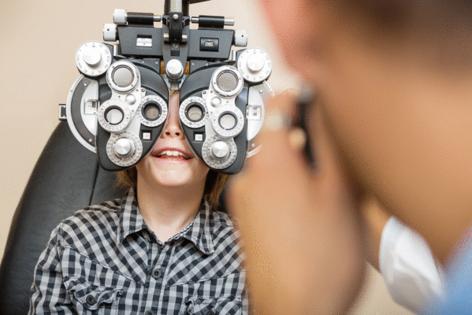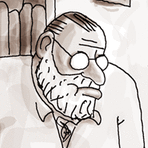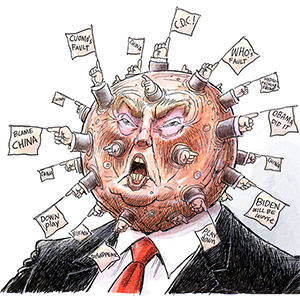Ask the Pediatrician: Amblyopia (lazy eye) treatment: Eye patching, drops, digital therapies and more
Published in Health & Fitness
Amblyopia, also known as "lazy eye," is a common eye condition in kids that develops when a child has an eye that does not see well. This is caused by a poor connection between the eye to the brain, which can happen for a variety of different reasons. Amblyopia is more common in one eye but can also happen in both eyes.
To restore normal vision in the affected eye, it is important to detect amblyopia as early as possible and treat it properly. If the problem continues too long, past a certain age, vision is often lost permanently.
Amblyopia can develop in different ways, but all involve the brain not getting clear, balanced input from both eyes.
There are several different types of amblyopia. Strabismic amblyopia occurs when one eye is not lined up with the other. The eye could be turned inward, outward, upward or downward. When the two eyes do not see the same thing, the moving or wandering eye will lose vision.
Another type of amblyopia, deprivation amblyopia, happens when there is something within the visual pathway that limits vision such as a cataract or ptosis (droopy) eyelid. When one eye needs glasses to function properly, this is called refractive amblyopia. The brain will not be able to form a proper image if the information it receives from the eye is out of focus, and the eye develops amblyopia.
Glasses are a common corrective treatment for amblyopia, especially in cases of bilateral (both eyes) refractive amblyopia, and for unilateral refractive amblyopia.
Once an ophthalmologist diagnoses the problem in the weaker eye, your child may need to wear a patch over the "good" eye for periods of time. This forces them to use and strengthen the eye that has become "lazy." Patching therapy will continue for as long as necessary to bring the weaker eye up to its full potential and keep it there. This could take weeks, months or even a few years.
As an alternative to an eye patch, the ophthalmologist might prescribe eye drops or ointment to blur the vision in the good eye and force the weaker eye to work and be strengthened. This can stimulate your child to use the amblyopic eye. Like patching, this could take an extended period before treatment is completed.
There are newer treatments for amblyopia. These treatments use digital technology to focus on both eyes.
Luminopia uses a virtual reality platform where the image seen by the stronger eye is altered. This allows for the weaker eye to improve vision. Curesight uses an eye tracking platform and special glasses that affect the central vision of the stronger eye, allowing for the weaker eye to improve.
Both have been proven effective in amblyopia treatment but cost may be a limiting factor for these treatments, since they may not be covered by all insurance plans.
Surgery can be used along with the therapies listed above to treat amblyopia but it cannot be the only treatment used. For example, surgery to remove a cataract may be needed for deprivation amblyopia, along with glasses and eyepatch wearing.
An examination with a pediatric ophthalmologist will be helpful as you make decisions on amblyopia treatment for your child.
____
Eniolami O. Dosunmu, MD, MPH, FAAO, FAAP, is a member of the American Academy of Pediatrics (AAP) Section on Ophthalmology and the Ohio Chapter of the AAP. She serves on Pediatric Rural Health Workgroup and has served on the Executive Committee Section on Ophthalmology for the AAP. She is also an Associate Professor of Ophthalmology at the Abrahamson Pediatric Eye Institute, Cincinnati Children’s Hospital Medical Center, and the University of Cincinnati.
©2025 Tribune Content Agency, LLC.










Comments